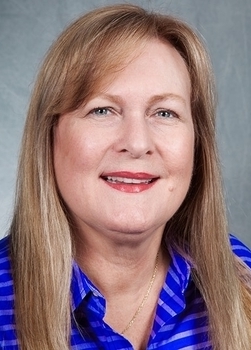Mock jurors may seem like a species unto themselves, but, when properly recruited, they are everyday people who are representative of the trial venue. Following the post on why Magnus controls research videos, I am commenting on the origin of the mock jurors because of another subtle detail I picked up recently in reading a competitor’s proposal. I’ll add, “Where do you get your mock jurors?” is #1 our all time frequently asked questions list. Therefore, the topic is appropriate for discussion of best and worst practices in recruiting. Magnus is, or I should say, Melissa is, a stickler for proper recruiting. That is to say, to the greatest extent possible, mock jurors should be randomly recruited to match the demographics of the trial venue. They should not be pulled from a frequently used list leading to assembly of a group of repeat jurors. Back to the general rule, we believe that good quality inputs – in the form of a “clean,” random, unbiased, representative sample of jury eligible citizens – is key to ensuring that what is learned from their interactions is valid. I mention this because, while Magnus pays a lot of money to have jurors recruited properly by our recruiter, some of our competitors take short cuts. The use, and reuse, of the same jurors in a venue, from a list is of past participants one of the worst offenses. Recruiting via advertising, whether it be newspaper (old school) or the internet (newer approach) or even, heaven forbid, Craigslist, is biased from the start. Using temp agencies is also biased. And, one must be careful when allowing a market research facility which is going to host a mock jury project conduct the recruiting. While many will do a cold call recruit, some consultants willingly allow the market research facility to utilize their “database.” These are people who may have done a taste test last week, a hand lotion test the week before, maybe a mock trial the month before, and a hospital’s focus group before that. These are people on the list who have signed up for projects in much the same way as people apply for other types of employment. And, ultimately, the question is, do you get a clean evaluation or one tainted by response patterns fixed by repeated participation in market or litigation research? Recruiting from a database is less costly and, usually, the facility provides a discount for either the recruiting or the space when they get the recruiting job. So, it is cheaper. Cheaper is better, right? Well, maybe not when the stakes are high enough to warrant conducting a mock jury. When one is spending money to get an honest evaluation of the case, I’d suggest that being cheap is one of those penny wise and pound/dollar foolish things. So, back to the competitor’s proposal – there were many references in it to using a market research facility and cost savings from doing so. The number one way to get cost savings out of such an arrangement is to allow the facility to do the recruit using their database. Though I picked up on this cue, I am sure the potential client did not. Once again, buyer beware!
There are almost as many ways to recruit research participants, including mock jurors, as there are types of jury/trial consultants, with both participant recruiting and consultants falling into “the good, the bad, and the ugly” categories. I will list all of possible ways I know Magnus and its competitors recruit people to participate in research studies, including mock trials and focus groups: (1) Craigslist; (2) advertisements, including internet based and “old school” print ads in newspapers (yes, there are people who still answer “help wanted” ads in newspapers); (3) asking relatives, friends, employees, etc. of the attorney and/or consultant; (4) databases of professional mock jurors compiled by a jury recruiter, market research facility, and/or the consultant; (5) employment or temp. agencies; (6) online services that have a database of people who work from home as “mock jurors”; and (7) random sampling, via contacting people unknown to the attorney, consultant, and recruiter, of jury eligible citizens in the trial venue, to match the demographic characteristics of the trial venue. Which recruiting method do you think Magnus employs? If you guessed the last method, random recruitment of jury eligible citizens in the trial venue, you are right! As David mentioned, we are asked by prospective clients how we recruit our mock jurors more than we are asked any other question. When I am asked this question, I always answer, as if I have never heard this question before, “We recruit our mock jurors the right way, by random digit dialing telephone numbers of jury eligible citizens in the trial venue, to reflect, as closely as possible, the demographic characteristics of the place where we work. It takes our jury recruiter a long time to find our mock jurors and other research participants, but, as a social psychologist, I know this is the only way to ensure we have the proper sampling technique for every case. Just as everything else we do on behalf of our clients, we never take any shortcuts when recruiting research participants.” I cannot imagine recruiting research participants any other way, because I believe in the fundamental notion that research data are only as good as the research sample. In laypersons’ terms, this is known as “garbage in, garbage out,” in other words, a biased research sample, due to poor quality recruiting, guarantees improper results. Doing things the right way is costly, in terms of both time and money, but when a client is depending on me to make a positive difference in the outcome of his/her case, doing things the right way is the only option for me.



Comments are closed.